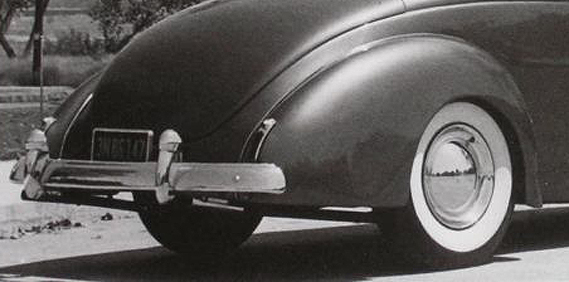The Five Freshest Taillights of the 40s

If you look at American car taillights from the 1920s, they are almost all pretty much round and simple. They varied in size (larger for luxury cars), but were treated as somewhat of an afterthought, bolted onto the back fender mainly because it was required to be there. Then the 1930s streamline hit: The idea of making an object slip through the wind as smoothly as possible. Headlights sunk into fenders, windshields laid back implying forward motion, and fenders swooped over wheel openings in a sexy way. The automobile could now look fast when it was sitting still. It hit European car stylists first, but by the end of the 30s, Deco and Streamline had made their highest mark on US auto design as well, and we have some beautiful cars to prove it. This also gave us smooth taillight shapes that stood out, and more importantly, could be put in the back of an older car to give it an updated look. The birth of the custom! Below I’ve listed my favorite pre-war through ’48 tail lamps, in no certain order. (Obviously, 1949 was a watershed year for car design, so I consider those ‘cars of the 50s’ in this case.) Please add your favorite rear lamps designs as well…
1. 1939 Ford: The sweetest little teardrop to grace the back of any car. Still a favorite among hot rodders and early custom builders alike. The super-sized ’39 Zephyr unit ain’t too shabby either,
2. 1941 Studebaker: Turn this baby on her side horizontally, and she is just as pretty. Fits any fat-fendered car quite nicely.
3. 1940 Chevrolet: Another great tail light design that universally works on the back of a Model A roadster or an early custom. Simple and clean.
4. 1946-48 Packard: It was a quick post-war update, but I really like these red bricks. You don’t see them on too many customs, but I think they would work quite nicely on the right (albiet large) car.
5. 1946-48 Buick: Cool directional shape lamp that look right frenched in, or laying on the fender.


